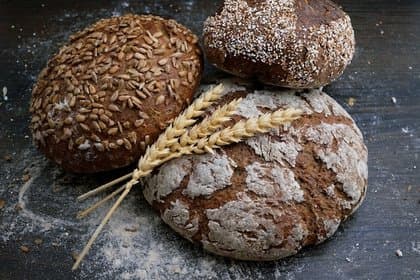How to Catch Carp with Bread
Bread is a versatile and effective bait that can be used to catch carp. In this article, we will discuss the best ways to use bread to catch carp, including tips on how to prepare the bread, the best times to use it, and the most effective techniques for reeling in a big catch. Whether you're a seasoned angler or just starting out, this guide will provide you with the knowledge and tips needed to improve your chances of catching carp using bread as a bait.

Carp fishing is a popular pastime for anglers of all skill levels, and bread is a versatile and effective bait that can be used to catch these elusive fish. In this article, we will discuss the best ways to use bread as a bait to catch carp, including tips on how to prepare the bread, the best times to use it, and the most effective techniques for reeling in a big catch.
Preparing the Bread
When using bread as a bait for carp, it's important to use fresh, white bread that is soft and moist. Avoid using bread that is stale or moldy, as this will not be as effective at attracting the fish. To prepare the bread, simply tear it into small pieces and roll it into balls or doughnuts. This will make it easier to cast and will also help to keep the bait on the hook longer.
The Best Times to Use Bread
Bread is an effective bait to use all year round, but it is most effective during the warmer months when carp are more active and feeding heavily. The best times to use bread as a bait are during the early morning and late evening hours, when the water temperature is cooler and the light is low. This is when carp are most active and are more likely to be feeding on the surface, making them more visible and easier to catch.
Techniques for Using Bread
When using bread as a bait to catch carp, there are several techniques that can be used to increase your chances of success. One of the most popular techniques is to use a float rig. This involves attaching a small piece of bread to the hook and suspending it in the water using a float. This allows the bread to move naturally in the water, making it more attractive to the fish. Another technique is to use a bottom rig, where the bread is placed on the bottom of the water and the angler waits for a bite. This is a more passive approach, but it can be effective in areas where carp are known to feed on the bottom.
Another technique is to use a chum pot, which is a container that is filled with bread and placed in the water. This creates a scent trail that can attract carp to the area, making them more likely to bite. Additionally, when using bread as a bait, it is important to be patient and wait for a bite, as carp can be quite selective and may take some time to find the bread.
When using bread as a bait, it's also important to consider the location. Carp can be found in a variety of different types of water, including rivers, lakes, canals, and ponds. In general, carp prefer still or slow-moving water with a moderate depth, and they are often found in areas with plenty of cover such as weed beds, sunken logs, or other submerged structures. Therefore, it is important to fish in areas where carp are known to be found, and to adjust your fishing tactics accordingly.
In conclusion, bread is an effective bait for catching carp, and can be used all year round. It's important to use fresh, white bread and to prepare it in small pieces, to use it during the early morning and late evening hours, when the water temperature is cooler and the light is low. Additionally, using a float rig, bottom rig, or chum pot can be effective and adjusting your fishing tactics to the location can increase your chances of success. With the right approach and a little patience, you can reel in a big catch using bread as your bait.
No comments yet, be the first to share your thoughts!
Newsletter
Sign up for our newsletter and stay up-to-date on the latest tips, tricks, and techniques in carp fishing. From beginner to expert, our newsletter offers something for every level of angler. Do not miss out on exclusive content, product reviews and fishing reports that will help you catch more carp.
Related Posts
The Ultimate List of Boilies Brands: 100 Brands to Know
almost 3 years ago
The 60 Best Fishing Gadgets for an Unforgettable Fishing Experience in 2023
almost 3 years ago
The Importance of Angling Fishing and the Nash R3 Siren in Carp Fishing
almost 3 years ago
Fishing as a Carp Control Method in Australia
almost 3 years ago
The Best Carp Fishing Spots in UK
almost 3 years ago
The Resilient Migration of Carp: A Fun Fact for Anglers
almost 3 years ago